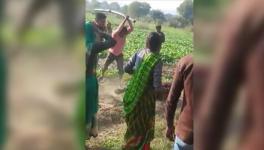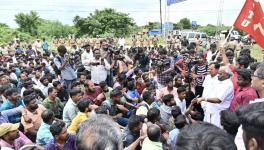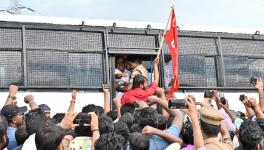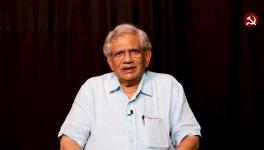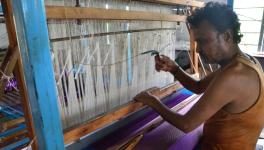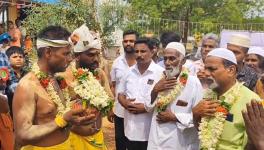Venmani: A Symbol of Struggle Against Caste Atrocities and Class Struggle
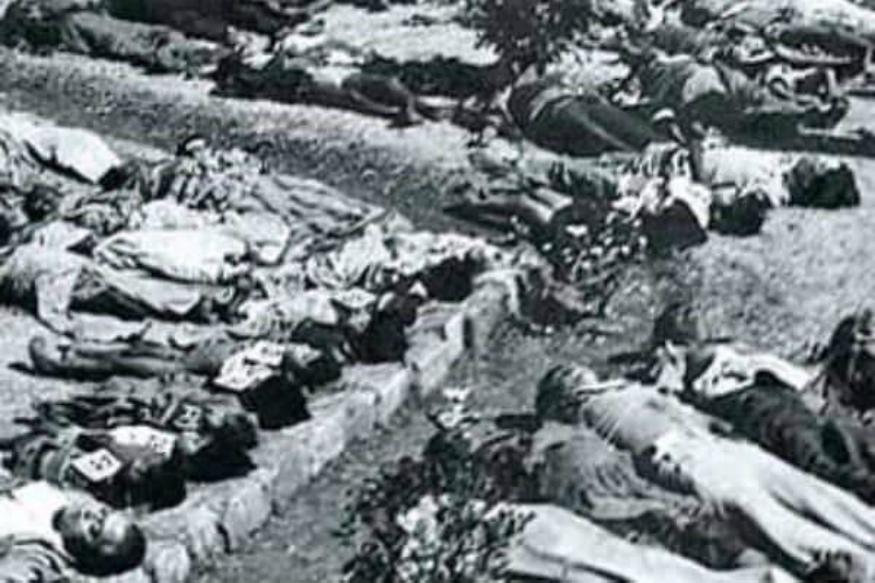
Image Courtesy: News18
Keezhvenmani is a household name for the working class movement, particularly in Tamil Nadu. The small hamlet in the present Nagapattinam district for the past half a century attracts several thousands of farmers, agricultural workers, youth, students and workers every year on the day the world celebrates Christmas with much flair and happiness. The visitors raise slogans in memory of the 44 victims including 23 children and 16 women who were locked inside a small hut and set on fire by the landlords and their henchmen. The crime they committed was unionising, demanding fair wages and better working conditions for the strenuous work they do in the farms owned by the landlords. This is one of the most brutal and violent attacks on dalits after independence.
The memorial erected by the Communist Party of India (Marxist) [CPI(M)] and the Centre of Indian Trade Unions (CITU) stands testimony of the struggle against caste atrocities and the class struggle in 1968. Even after 51 years of the ‘Venmani Massacre’, the plight of the landless dalits continues to remain in shambles, not to mention the atrocities on dalits.
SLAVES IN THE FARMS
The agricultural labourers were used as slaves by the landlords for so long without proper wages even after independence. In addition to the large tracts of land they owned, they were politically powerful and influential. They had their own ways of extracting work from the agricultural labourers who were treated like slaves. Very minimal wage and unlimited working time were suffocating the agricultural labourers in the region. The labourers were subjected to brutal punishments including whiplash by the henchmen of the landlords and those who dared to question were forcefully fed water mixed with cow dung.
Also read: Dalit Man in Tamil Nadu’s Thiruvarur District Abused and Tortured by Upper Caste Men
The sufferings of the labourers continued till the arrival of communist leaders like Maniammai and B Srinivasa Rao (BSR). The labourers took the courage to organise themselves and formed the agricultural labourers’ union under these leaders, much to the fury of the landlords. The landlords retaliated by forming their own paddy cultivators’ association. The workers who were organised under the leadership of the red flag were denied work and threatened.
MASSACRE AT NIGHT
The continuous scuffle led to the kidnap and torture of a supporter of the labourers by the landlords. The labourers managed to release him from the clutches of the landlords resulting in the death of a person related to the landlord, leading to the invasion of the village by the infuriated leader of the landlords, Gopalakrishna Naidu. The gun-bearing henchmen and their leader went on a rampage and attacked everyone on their sight. The labourers could only throw back stones at the attackers for some time and could not resist the continuous firing and started to retreat. Many of the women, children and elderly who could not run to safety, took shelter in a small hut at the end of the street.
The infuriated landlord ordered his henchmen to lock the hut and set it on fire. They even took guard around the hut in a move to prevent anyone from escaping. Six people managed to escape from the hut but witnessed two people being thrown back into the raging fire. A total of 44 people, of which 23 were below the age of 16 and 16 women, were burnt to death.
ADMINISTRATIVE AND JUDICIAL BETRAYAL
The police never arrived at the spot even after information on the dalit settlement. The henchmen led by the landlord took refuge at the police station claiming threat to their lives by the labourers and the union. The newspapers carried news of the killings as a result of clash among the kisans (farmers) and deliberately left out the involvement of the landlords. The influential landlords tried to twist facts but the leaders of the CPI(M) stood against the nexus of landlords and policemen. The arrival of CPI(M) leaders Jyoti Basu, then deputy chief minister of West Bengal, B T Ranadive and P Ramamurthy attracted widespread attention towards the heinous crime.
Also read: Couple Hacked to Death, 'Honour' Killing Suspected in Tamil Nadu’s Thoothukudi
The Nagapattinam district court pronounced 10 years’ sentence to landlords including Gopalakrishna Naidu who was acquitted by the Madras High Court in 1975 while it upheld the punishment awarded to the labourers in the killing of an aide of the landlord. The judgement came as a shock to many, as the judges refused to believe the involvement of ‘rich and dignified landlords’ in the crime. In an immediate response, the CITU took out a protest rally to the high court against the acquittal of the landlords.
The crime took place during the first tenure of the Dravidian chief minister, C N Anna Durai of the Dravida Munnetra Kazhagam (DMK) which was accused of downplaying the incident. The DMK, which claims to champion the cause of the downtrodden and uphold social justice, was criticised for remaining silent after the truth came to light. But the incident did lead to land reforms, even though on a much lesser magnitude compared to that of Kerala and West Bengal. However, a large percentage of the dalits still remain landless.
THE STRUGGLE CONTINUES
If Keezhvenmani is an example of the caste atrocities and class struggle, the plight of the dalits continue in different forms across the state. Ironically, Thiruvarur district, which was part of the erstwhile Thanjavore district, is home to the maximum number of villages practicing untouchabilty in Tamil Nadu – the most recent incident being the death of 17 people in Coimbatore due to the collapse of a 25 feet high caste wall built along the dalit settlement by an upper caste man. Alagumalai in Tiruppur and Walajapet in Vellore are home to untouchability walls and fences against the dalits.
Also read: Dalit Youth Forced to Shave off Moustache, Thrashed in Gujarat’s Mehsana
Attacks on dalits for wearing sunglasses and sporting a moustache continue, while they continue to struggle for temple entry in many places of the state. Stone pelting on the funeral procession of a dalit woman by the caste Hindus near Kumbakonam, or the body of a dalit man being air dropped to the cemetery after the procession was denied permission to pass through a public path are incidents which happened this year. Honour killings are another example of the atrocities against dalits by the dominant caste fanatics while their fight to reclaim the panchami lands has gathered pace.
Get the latest reports & analysis with people's perspective on Protests, movements & deep analytical videos, discussions of the current affairs in your Telegram app. Subscribe to NewsClick's Telegram channel & get Real-Time updates on stories, as they get published on our website.










